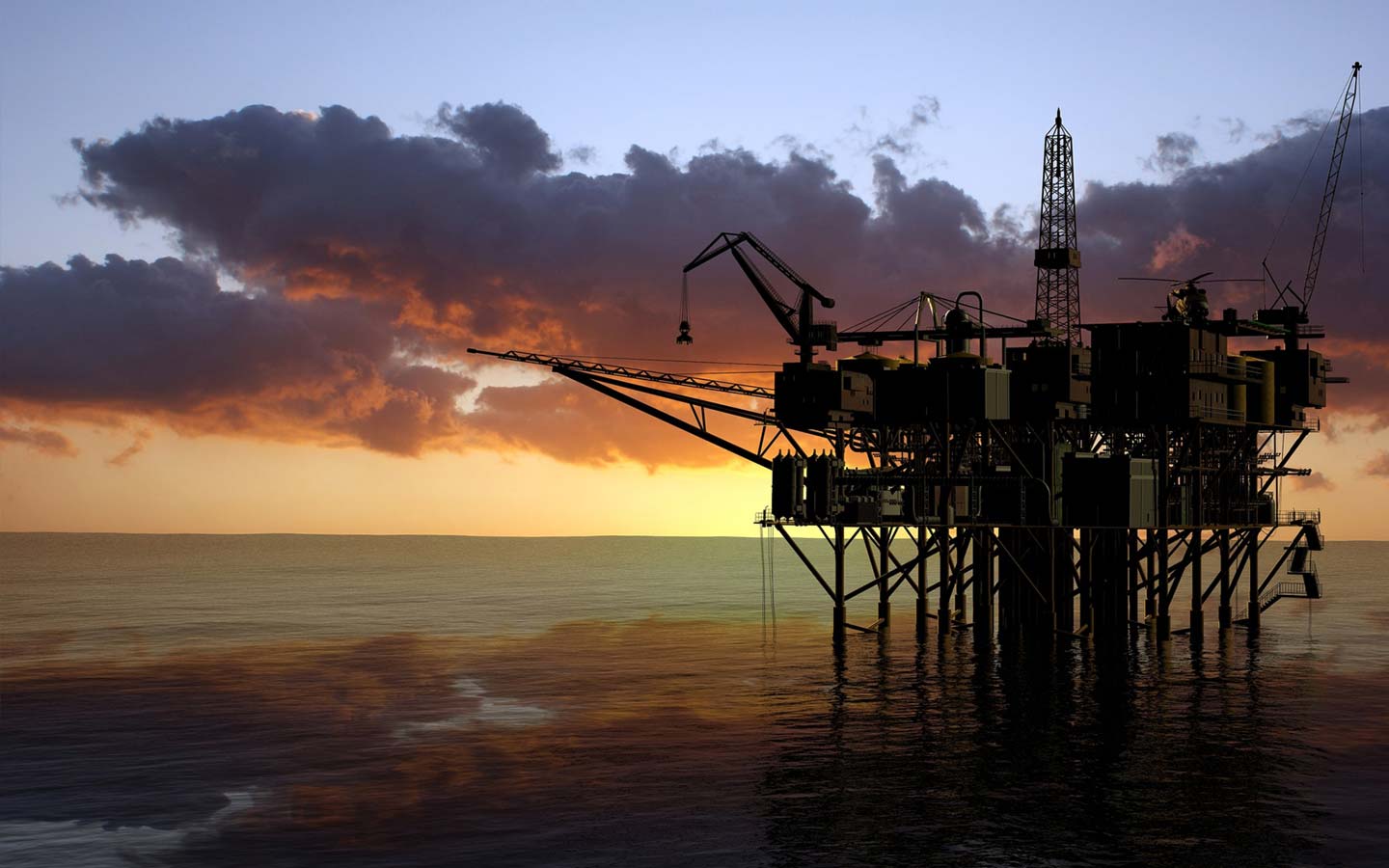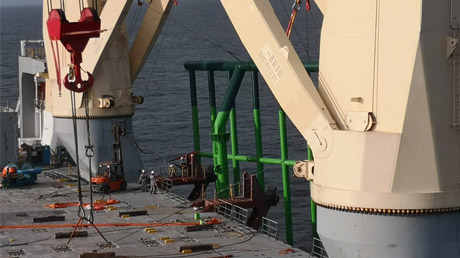





Please enable JavaScript.
Samsung Heavy Industries Nigeria
MV Svenja, Type 183
1 Riser Protection Frame (RPF)
New RPF: 190 t
Damaged RPF: 240 t
24.8 × 31.5 × 4.1 m
Egina site, Offshore Nigeria
Specials
Vessel modifications: Engineering, fabrication and installation of special hang-off frames on the port side of MV Svenja
“The entire team have proved that if there is a will to succeed, they can make it happen. It also goes to show what proper planning, coordination and teamwork can achieve without compromising safety. We are very happy with the work performed by SAL for this project.”
Bashir Abduallahi, Egina Close-out Leader at TOTAL
Replacing riser plates on the Egina FPSO took some extraordinary efforts
Imagine the crushing pressure and immense darkness one would find at more than 1.5 kilometres below the surface of the ocean. Picture that vast amounts of oil are kept underground there – far out at sea, and that the only way to get it is to instate massive machinery. This is exactly the case at the Egina offshore site in Nigeria. Located some 200 kilometres out at sea from Port Hartcourt in Nigeria, this remote place provides approx. 200,000 barrels of oil per day. To harvest, refine and store the oil, one would come to see the mighty EGINA FPSO vessel on site. SAL got close to this immense giant when we got involved in replacing a riser protector on the vessel – a project that took a lot of effort and proved to be far more complex than anyone had imagined.
The Egina oil field covers approx. 10% of Nigeria’s total oil production and makes up one-fourth of the entire daily production made by TOTAL worldwide. The 220,000 GT EGINA FPSO, which stretches some 330 metres and has a beam of 60 metres, serves as the floating production and storage entity offshore (FPSO). The FPSO is connected to 44 subsea wells located more than 1,750 metres below the surface on the seabed. It is the largest FPSO that TOTAL has ever built. Indeed, she was a mighty ship to behold for the crew onboard our MV Svenja, as we took on the assignment as subcontractor for replacing a damaged riser protector.
Samsung Heavy Industries Nigeria hired SAL and their Nigerian business partner, Marine Platforms Ltd, to replace the riser protector in a safe, efficient way.

To the uninitiated, the protector itself is a structure that sits on the outside of the side shell plating of the EGINA FPSO and protects the risers against any external impact. The risers consist of pipes connected to the flow lines/manifolds/wellheads on the subsea, measuring 24.8 metres by 31.5 metres and weighing approximately 190 tonnes. They are the primary devices that convey fluids to the FPSO and buoy, so their importance is obvious. If they don’t work properly, neither does the FPSO.
There are nine protectors in total, and one was damaged when the FPSO was towed to the Egina oil field. SAL took on the job to transport anew riser protector from the SHI-MCI Quay Lagos to the Egina oil field. On site, the riser protector was upended by making use of MV Svenja’s two 1,000 tonnes cranes and positioned for the offshore construction vessel Maersk Inventor to pick it up and install it directly onto the FPSO. To ensure a safe transaction, two special hang-off frames had to be designed, fabricated and installed to the port side haul of MV Svenja. One hang-off frame was used to place the new protector, allowing the Maersk Inventor to safely collect it for installation. The second hang-off frame was used to receive the damaged protector.
The MV Svenja operated in DP mode during the entire offshore operation and proved to be an efficient working partner to the DP3 vessel Maersk Inventor. It took a significant amount of planning as well as engineering for SAL to take on this job. In the end, the planning, engineering, project management and QHSE was a complete success.
Because the EGINA FPSO had to shut down all operations throughout the duration of the replacement operation, time was a critical factor. The Maersk Inventor, the Svenja and the crews set to work and completed the entire job in just 24 hours.
The entire project was executed according to plan, and TOTAL was very satisfied with the results.